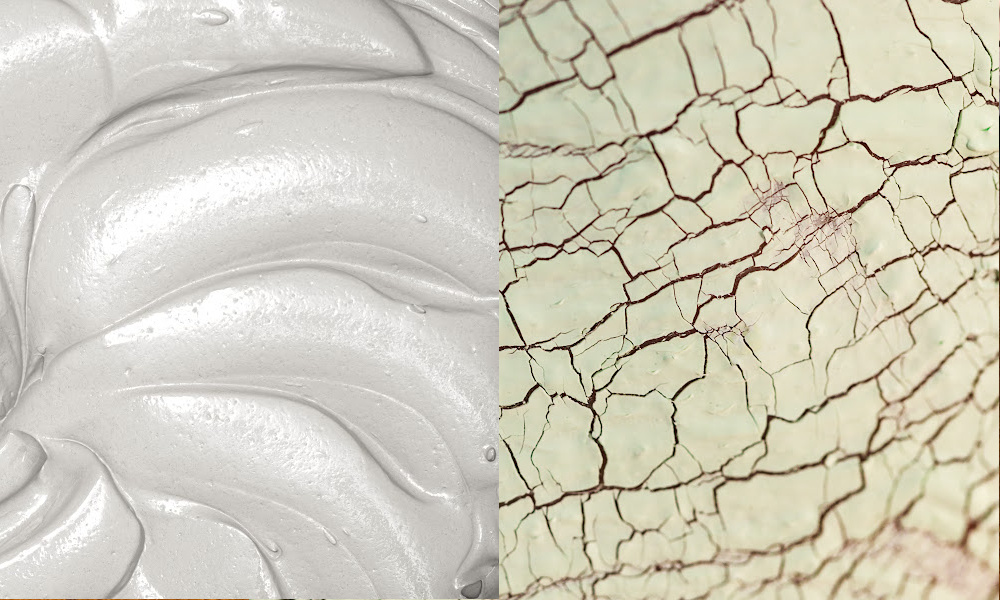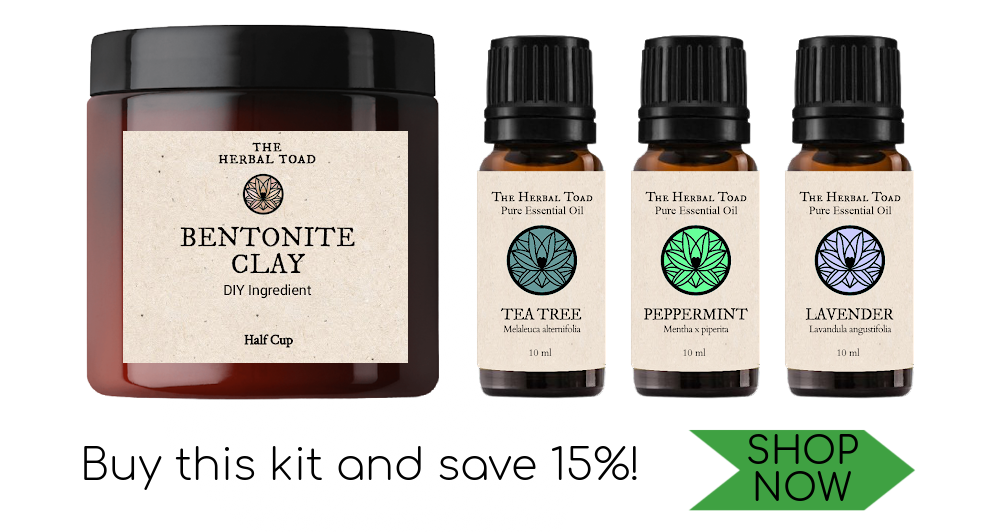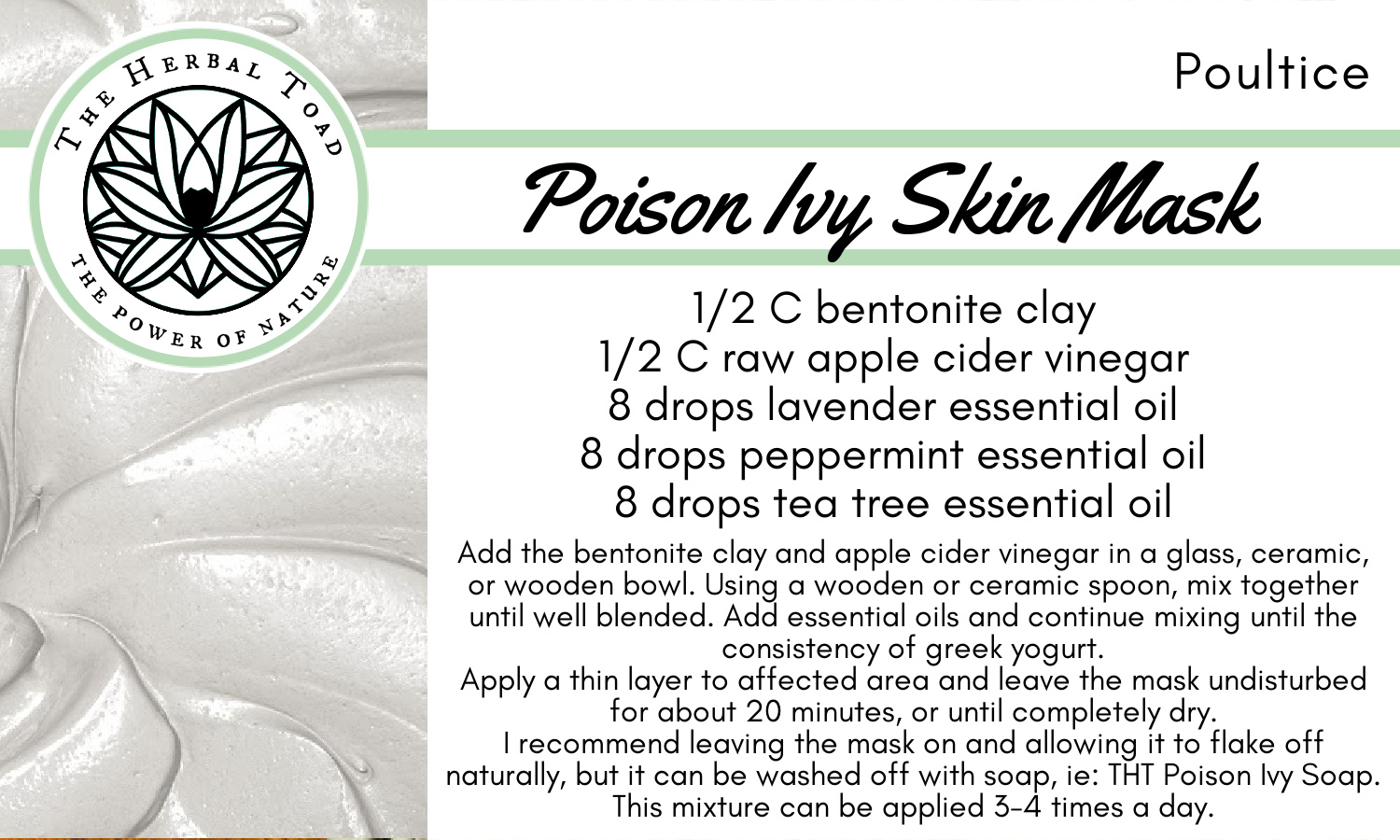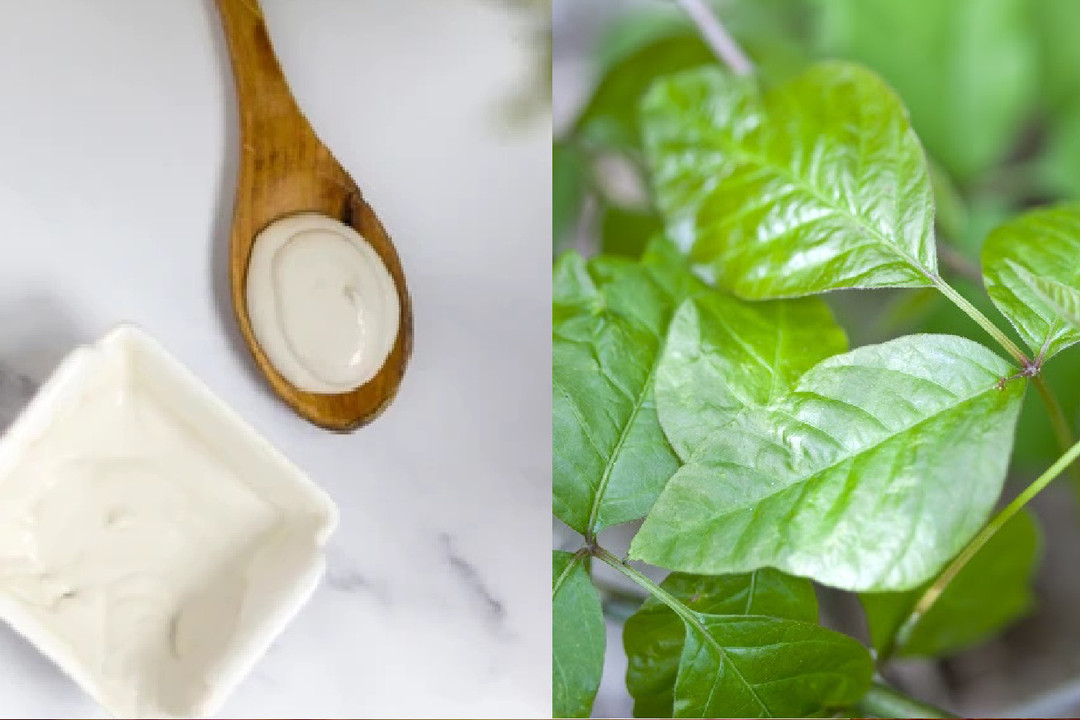DIY Clay Mask for Poison Ivy Recipe
Studies have shown that bentonite clay can treat poison ivy rash and speed up healing following a reaction, and this DIY clay mask for poison ivy recipe is a genuine triple threat to poison ivy, poison oak, poison sumac, and other plant based and / or contact allergic reaction.
This remedy is the ideal alternative to calamine lotion and it is way more effective at extracting the oils that cause irritation, blistering, pain, and that dreaded itch. Additionally, the mixture is loaded with compounds that dry up weepy blisters and help speed up healing, as well as helping to fight off infection. Essential oils that help treat poison ivy are a part of this recipe. See recipe notes for other essential oils that can be used to help relieve the symptoms of poison ivy.

Bentonite Clay
Bentonite Clay is derived from volcanic ash and has been used for centuries to detoxify and heal the body. It is the main ingredient in this recipe that will draw out urushiol, the oil in poison ivy that causes all the trouble.
Apple Cider Vinegar
While apple cider vinegar on its own would be too acidic to use on irritated skin, when combined with bentonite clay, the pH is in the range that is more beneficial to delicate skin. When combined with apple cider vinegar, bentonite clay acts as an effective antibiotic and will bind to both toxins and bacteria within pores and extract them. The other, more practical reasons for using apple cider vinegar over water is that it makes a smoother mix that is free of clumps, and it acts as a preservative.
Lavender Essential Oil
Lavender essential oil is well known for relaxation and soothing. Lavender reduces inflammation, can help speed up healing, acts as a pain reliever, and natural antibiotic.
Peppermint Essential Oil
Peppermint essential oil, applied topically, acts to cool irritated skin, is an effective pain reliever, is anti fungal, and has been found to work as an effective natural antibiotic.
Tea Tree Essential Oil
Tea Tree essential oil has been shown to work quickly to reduce histamine-induced skin inflammation. It is also a powerful antibacterial.

Bentonite Clay Mask for Poison Ivy Recipe

-> Print Recipe Cards
Ingredients
- 1/2 C bentonite clay
- 1/2 C raw apple cider vinegar
- 8 drops lavender essential oil
- 8 drops peppermint essential oil
- 8 drops tea tree essential oil
Instructions
- Add the bentonite clay and apple cider vinegar in a glass, ceramic, or wooden bowl. Using a wooden or ceramic spoon, mix together until well blended.
- Add essential oils and continue mixing until the consistency of greek yogurt.
- Apply a thin layer to affected area, avoiding eyes and mucus membranes.
- Leave the mask undisturbed for about 20 minutes, or until completely dry.
- I recommend leaving the mask on and allowing it to flake off naturally, but it can be washed off at this time is need be. Again, this is where I would use Poison Ivy Bar Soap if you have it.
- This mixture can be applied 3-4 times a day.
How to Use the Mask and Treat Poison Ivy Naturally
Immediately Following Contact: Wash the skin with soap and water as soon as possible after touching poison ivy. I recommend keeping The Herbal Toad’s Poison Ivy Soap on hand for such an occurrence. If you don’t have Poison Ivy soap, the next best thing is dish soap or another soap designed to remove oils. These soaps will help to remove the urushiol from the skin.
If Skin Reacts to Poison Ivy: Apply the Bentonite Clay Mask from the recipe below in a thin layer and leave on to dry and flake off on its own. Continue washing 1-2 times a day with Poison Ivy Bar Soap.
For Night Time Relief: Using a small amount of your prepared bentonite clay mixture from the recipe below and a little more apple cider vinegar a few drops at a time until the mixture is more liquid than paste. This will allow for night time application with less flaking. It can be applied using a cotton ball.
-> Print Recipe Cards
APOTHECARY PIE - a Blog by The Herbal Toad
10 Amazing Elderberry Benefits
While the most common type of elderberry is Sambucus nigra, or black elderberry, there are several v...
Guide to Creating a Personal Space
Having your own personal getaway space can create positive changes to your body, mind, and spirit......
Treating Gout and Kidney Stones Naturally
While gout and kidney stones are sometimes caused by the same thing, too much uric acid buildup in t...




